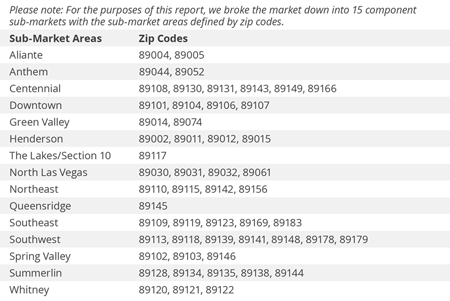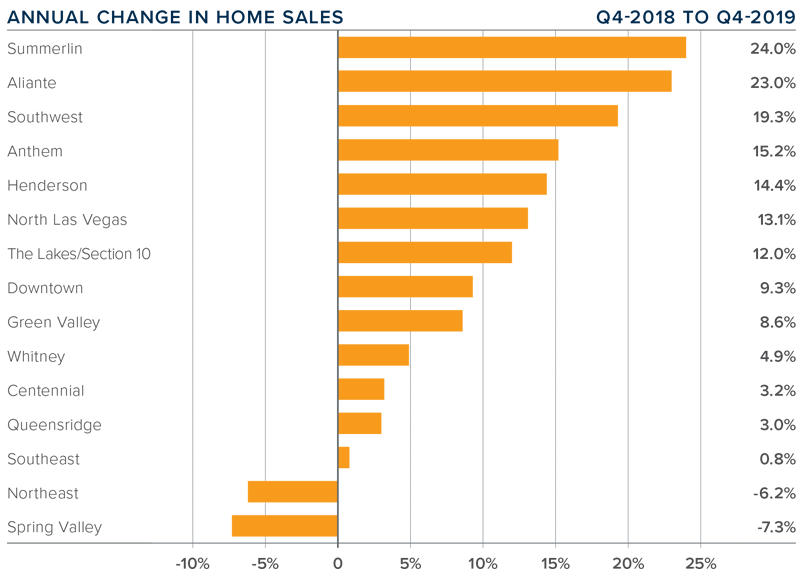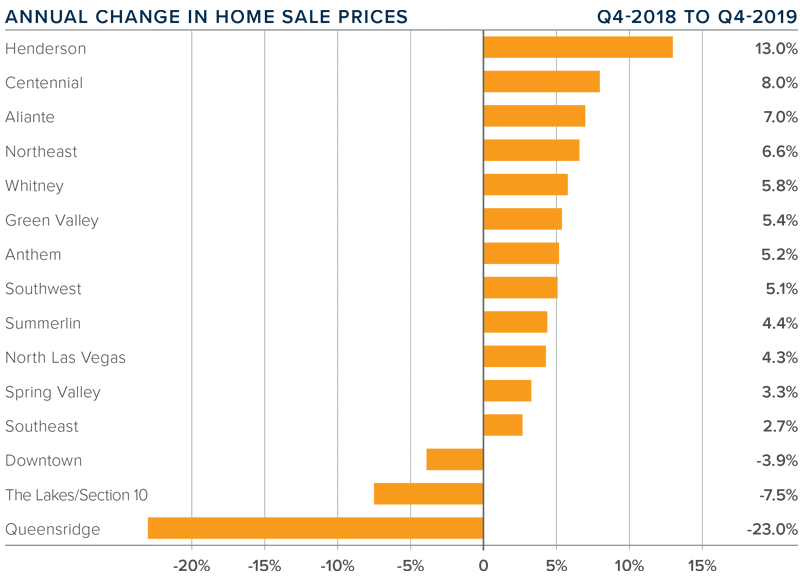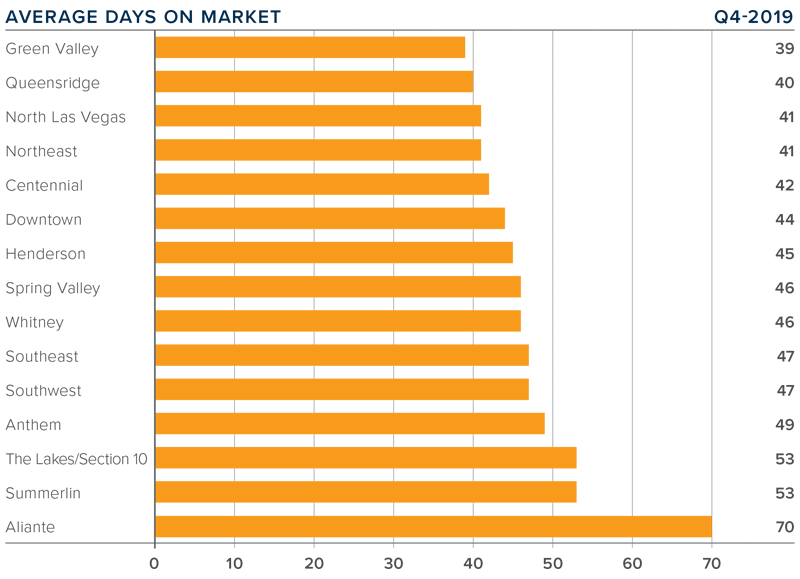The following analysis of the greater Las Vegas real estate market is provided by Windermere Real Estate Chief Economist Matthew Gardner. We hope that this information may assist you with making better-informed real estate decisions. For further information about the housing market in your area, please don’t hesitate to contact your Windermere agent.
ECONOMIC OVERVIEW
Job growth in the Las Vegas metropolitan area picked up in the fall of 2019 with the addition of 27,100 new jobs over the past 12 months. This represents an annual growth rate of 2.7%. Employment growth is now well above the national average (1.4%) and a pleasant surprise following the poor rate of growth in the middle of the year.
The unemployment rate in the Las Vegas metro area was 3.7%, down from 4.5% a year ago.
HOME SALES
- A total of 8,151 homes sold in the final quarter of 2019, an increase of 9.4% compared to the same period a year ago, but 13.5% lower than in the third quarter of the year.
- Home sales rose the most in the Summerlin neighborhood. There were double-digit increases in an additional six neighborhoods.
- Sales activity was mostly positive. Sales rose in thirteen sub-markets but fell in two. The most significant drop was in the Spring Valley neighborhood, but the drop was only 20 units.
- Pending sales rose a significant 17.6% year-over-year but were 19% lower compared to the third quarter of 2019, suggesting that closings in the first quarter of 2020 may be slower than in the final quarter of 2019.

HOME PRICES
- Home prices in the area rose 6.1% compared to the fourth quarter of 2018 to an average of $325,668. Prices were up 1.3% compared to the third quarter of 2019.
- The rate of home price growth picked up in the final quarter of the year and continues to rise at rates well above most of the nation. Demand appears to be robust and, in concert with very attractive mortgage rates, I anticipate home prices will continue rising through 2020.
- Prices rose in all but three sub-markets compared to the same quarter last year. The strongest growth was in the Henderson sub-market, where prices were up 13%.
- The takeaway here is that demand for housing remains robust, allowing prices to continue to rise.

DAYS ON MARKET
- The average time it took to sell a home in the region rose 11 days compared to the fourth quarter of 2018.
- Regionwide, it took an average of 47 days to sell a home in the fourth quarter of 2019, and it took 3 days longer to sell a home than in the third quarter of the year.
- Days on market rose in all of the sub-markets compared to a year ago.
- As mentioned above, market time rose compared to the fourth quarter of 2018. The greatest increases were seen in the Aliante, Southeast Las Vegas, Summerlin, and Whitney neighborhoods.

CONCLUSIONS
 The speedometer reflects the state of the region’s real estate market using housing inventory, price gains, home sales, interest rates, and larger economic factors.
The speedometer reflects the state of the region’s real estate market using housing inventory, price gains, home sales, interest rates, and larger economic factors.
Employment growth in Clark County has picked back up and demand for ownership housing is robust. In addition to this, mortgage rates remain at very attractive levels. Given these factors, I anticipate the Las Vegas area will be one of the best performing markets in the Western U.S. in terms of home price growth in 2020. As such, I am moving the needle slightly more in favor of home sellers.
ABOUT MATTHEW GARDNER
 As Chief Economist for Windermere Real Estate, Matthew Gardner is responsible for analyzing and interpreting economic data and its impact on the real estate market on both a local and national level. Matthew has over 30 years of professional experience both in the U.S. and U.K.
As Chief Economist for Windermere Real Estate, Matthew Gardner is responsible for analyzing and interpreting economic data and its impact on the real estate market on both a local and national level. Matthew has over 30 years of professional experience both in the U.S. and U.K.
In addition to his day-to-day responsibilities, Matthew sits on the Washington State Governors Council of Economic Advisors; chairs the Board of Trustees at the Washington Center for Real Estate Research at the University of Washington; and is an Advisory Board Member at the Runstad Center for Real Estate Studies at the University of Washington where he also lectures in real estate economics.
 Facebook
Facebook
 X
X
 Pinterest
Pinterest
 Copy Link
Copy Link



